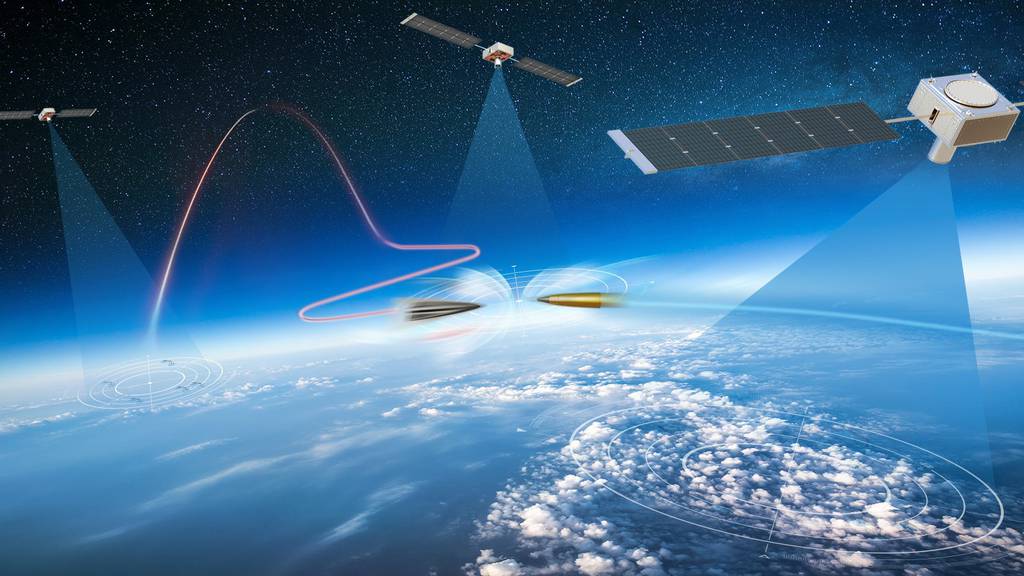The Missile Defense Agency will continue development of a space-based sensor capable of tracking hypersonic threats even though funding for the program is moving to the Space Development Agency, MDA’s director told members of Congress at a March 12 hearing.
Responsibility for the program was a source of friction between the Department of Defense and Congress in 2019, with lawmakers pushing for the MDA to be the lead agency on the effort.
RELATED

The Hypersonic and Ballistic Tracking Space Sensor is meant to counter the growing threat of hypersonic weapons being developed by Russia and China. Using a proliferated constellation of sensors in low earth orbit, HBTSS will be able to detect, track and maintain custody of hypersonic weapons as they traverse the globe, feeding that information to fire control systems that can eliminate the threat. HBTSS will be part of the SDA’s new architecture consisting of hundred of satellites working together in low earth orbit, with the first tranche expected on orbit in 2022.
The MDA awarded four $20 million contracts to companies to develop HBTSS prototypes in October. The four companies selected were Northrop Grumman, Leidos, Harris Corporation and Raytheon.
While the program was not included in the MDA’s fiscal year 2020 budget, the agency asked for $108 million for the effort as part of its unfunded priorities list.
Members of Congress pushed for the MDA to be the lead agency on HBTSS throughout 2019, despite pushback from the White House, who claimed it was too early to select a lead with the MDA, SDA and DARPA all contributing to the program. So when legislators passed the National Defense Authorization Act in December, they included language directing the MDA to take primary responsibility for the development and deployment of HBTSS.
So members of the House Armed Services Committee Subcommittee on Strategic Forces were understandably concerned when the MDA’s fiscal year 2021 budget documents stated that funding for HBTSS was moved to the SDA.
“In the last NDAA, we instructed--Congress instructed--that that development take place in the MDA. It was, as we understand, moved over to the Space Development Agency and then in this year’s PB21 it says that it’s transferred to SDA. Who’s working on this sensor capability?†asked Rep. Mike Rogers, R-Ala. at the March 12 hearing.
“These kinds of budget choices indicate a significant lack of judgement in determining which requirements are being pursued in our missile defense enterprise,†said Rep. Michael Turner, R-Ohio, the subcommittee’s ranking member. “I remain skeptical of the near-term programmatic direction of the missile defense.’
MDA Director Vice Adm. Jon Hill tried to reassure legislators, explaining that while the funding was moving to the SDA, his organization would remain in charge of sensor development for HBTSS. Under the newly proposed arrangement, the SDA would provide funding to the MDA to develop the sensor, which will in turn be given to the SDA to incorporate into their proliferated LEO constellation.
Hill said the decision to move the funding was made by Under Secretary of Defense for Research and Engineering Michael Griffin, who wanted to consolidate space funding under the SDA. Griffin has been the most outspoken advocate within the Department of Defense for the nascent organization.
“He’s trying to consolidate the dollars for space, because it’s such an important capability that we need,†said Hill, noting that there was no daylight between him and his equivalent at the SDA. “What I do recognize is a concern for the Congress is visibility into how those dollars are leveraged and making sure that MDA is in charge of building that sensor. There’s been no change in that strategy for MDA to remain the developer for that sensor and to provide that to SDA as part of their architecture.â€
Nathan Strout covers space, unmanned and intelligence systems for C4ISRNET.








